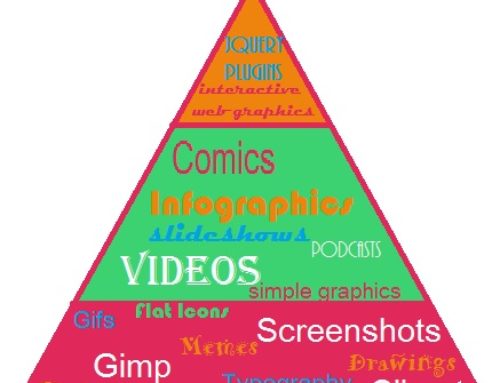 Guest Post by Dan Stelter
Guest Post by Dan Stelter
Does your business blog have the livelihood of a funeral? When you look around at your blog and analytics, what do you see?
No comments. No new traffic. No social media shares. No e-mail subscribers. And no phone calls! You have absolutely no evidence whatsoever that anyone even cares remotely about your blog.
What’s going wrong with your business blog?!
You follow all the best practices to perfection, churn out content with SEO keywords, share on social media, rinse and repeat. If you believe what all the experts say, you should be raking in dozens of qualified leads by now.
But you’re not getting anything like those amazing results they promised you.
Blogging for business purposes is (still) relatively new. So if you’re like many businesses, you’re still learning what works.
Here are three common approaches businesses try that don’t work:
1. Sounding like the expert
The thinking is that, if you show everyone how smart you are, they’ll naturally realize you’re the expert. And of course, they’ll hire you.
In principle, this is true, but most businesses approach it from the wrong angle. Many try to use fancy language that makes them sound smart.
You talk to a sophisticated audience…so you have to write with lots of jargon and smart-sounding language, right?
Wrong. This approach only turns readers off – even (or maybe, especially) the smartest of executives. Remember that CEOs, engineers, doctors, lawyers, and accountants are real, living human beings too. Today Internet readers and professionals of all IQs want short, simple, and factual information so they can consume and act on it now.
2. Short posts
Haven’t social media and the web made communication short and precise? Don’t your readers hate to pay attention for any longer than they have to?
Well, yes. But, that’s only true if you write boring content that sounds just like everyone else’s.
Neil Patel, a thought leader in the blogging and digital marketing verticals, runs in-depth tests to prove or disprove online marketing techniques. With content length, he tested his own homepage.
Visitors got to see a 1,292-word homepage and a 488-word homepage. Guess which got more conversions? The 1,292-word home page won by 7.6%!
Want your content to rank in Google’s top position? He also cites data that shows you need 2,450 words (on average) to make that happen.
Shorter works, but it’s not always what your audience wants.
3. A plethora of content
Doesn’t Google want you to consistently publish content? After all, billion-dollar marketing automation leader Hubspot runs seven blogs simultaneously for separate verticals, and they often publish more than once daily on each.
But you don’t have the budget to do that. They sink more money into their blog than you have for your entire marketing budget. Your business’ blog must be interesting, valuable, & engaging.
Did you know people write more than 2 million blog posts each day, though just 40% of the world has Internet access?
You have to do something unique to earn attention.
Business blog readers want value from, and personal relationships with, the companies they love. But most business blogs sound the same and don’t do enough to keep attention.
To succeed you have to know how to be valuable to your readers.
“Value” can actually mean many different things. For example, your blog could be funny and focus more on your opinions on common industry issues. Or, you could write simple tips your customers can take action on instantly to get more value from your product or service. You can also write in-depth guides packed with more useful tips than any of your competitors.
By now, many businesses realize this, but fail anyway. It happens because they don’t know many basic blogging techniques that experienced writers use to create connections. When you create a connection, you engage your readers. And engaged readers do one important thing much more than bored ones – they buy.
Here are some simple ways to create a sense of connection with your readers:
- Avoid jargon (even for sophisticated and technical audiences)
- Drop the hype and fancy language
- Use the word “you” more often than “I” or “we”
- Make use of white space
- Follow a simple editing process (complex processes with multiple editors dramatically change the original piece)
- Use simple, conversational language – just like you’re talking to a customer sitting across the table
- Focus on writing for readers first and optimizing for Google second
Connecting with your readers is simple, but not easy. What techniques does your business blog currently use to keep readers engaged? Please share in the comments below.
Image: GotCredit via Flickr, CC 2.0
 Right now, Dan Stelter is repairing his flooded yard, but you can download “The Ultimate Business Blog Survival Guide” to learn how to connect with your readers and grow your blog from scratch. You can also connect with him via Twitter and LinkedIn.
Right now, Dan Stelter is repairing his flooded yard, but you can download “The Ultimate Business Blog Survival Guide” to learn how to connect with your readers and grow your blog from scratch. You can also connect with him via Twitter and LinkedIn.






![Social Media: The Key to Transforming Doctor-Patient Communication [Redux]](https://shonaliburke.com/wp-content/uploads/2013/07/2478514667_c11f906e33_b-300x225-500x383.jpg)


lauraclick shonali danstelterSEO Great #WUL post, happy to share it!
shonali rhogroupee danstelterSEO You are so welcome! Happy Thursday to you both!
lauraclick rhogroupee Thanks so much for sharing danstelterSEO guest #WUL post on business #blogging!
ShellyKramer TY Shellster! Btw, did you see we tried to apply one of your lessons (on the “how to” in the subject line?) ;) danstelterSEO
RenildeDeWit mezaheer Ultimate_Social MeghanMBiro bebizzy kathikruse TYVM for sharing danstelterSEO guest #WUL post!